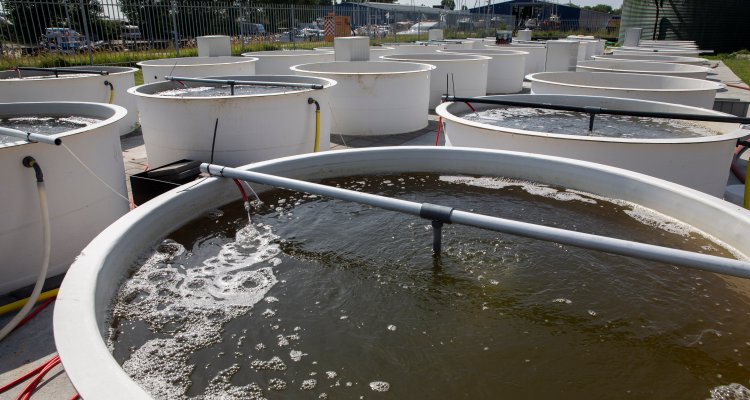
Facility
Mesocosms
The most common form of an aquatic mesocosm is a pond, containing natural water and sediment and a community consisting of at least micro-organisms, plankton, macrophytes and macro-invertebrates and sometimes (small) fish. Wageningen Marine Research offers mesocosm studies for marine water.
Mesocosms are the perfect tool for studying impacts on an ecosystem under field relevant conditions. The design of a mesocosm study is fully based on the questions to be answered. We can apply mesocosms for both the fresh water and the marine environment for studying the impact of substances (e.g. agricultural chemicals, contaminated sediments, complex effluents) or other disturbances (e.g. turbidity, eutrophication, temperature/cooling water) on the ecosystem. In addition, mesocosms provide a good tool for fate studies of chemicals.
Advantages of mesocosm studies
A mesocosm study has the advantage above standard laboratory test that it maintains a natural community under natural (exposure) conditions, taking into account relevant aspects from ‘the real world’ such as bioavailability, substance degradation, indirect effects, biological compensation and recovery. Therefore mesocosms are the closest as you can get to the real field, without loosing the advantage of reliable reference conditions and replication.
In the procedure for pesticide registration mesocosms have an accepted value as higher tier study to validate the results of the risk assessment based on data from laboratory studies. As it is accepted that a well designed mesocosm study has high field relevance, the results from such a study can overrule the results from earlier laboratory tests. We perform this kind of mesocosms studies (following the principles of OECD Good Laboratory Practice) since 1999.
Our facilities
During the past 20 years we gained broad experience with various types of mesocosms. Besides the standard stagnant ponds, we worked with flow trough systems to study the chronic impact of complex effluents, tidal marine systems and mesocosms consisting of two connected compartments representing a pelagic surface system and a (dark) deep water benthic system. For questions related only to the plankton community we use plankton enclosures. Most mesocosm types can be applied for studying the marine or the fresh water environment.
Directly to our facilities
- Theme 'Maritime Services' - Water pollution and the impact on the marine ecosystem
- Sinderhoeve - Renkum
Contact
A carefully designed mesocosm study is a powerful tool to study the impact of a diversity of (human) impacts under field relevant conditions. We are very willing to discuss, free of obligations, the potential of mesocosms for your specific situation.